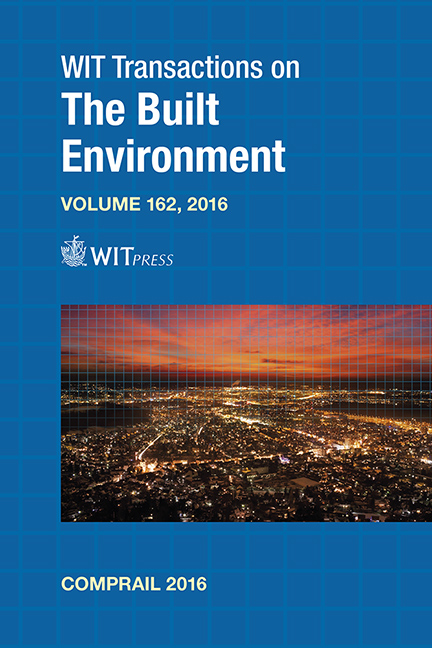Light Rail Ballasted Track Geometry Quality Evaluation Using Track Recording Car Data
Price
Free (open access)
Transaction
Volume
162
Pages
13
Page Range
303 - 315
Published
2016
Size
1,817 kb
Paper DOI
10.2495/CR160281
Copyright
WIT Press
Author(s)
D. Camacho, T. H. Le, S. Rapp, U. Martin
Abstract
A deep understanding of the track quality degradation process is essential for an efficient and safe operation of Light Rail Train (LRT) systems. Its understanding allows infrastructure managers to determine maintenance strategies that account for RAMS (reliability, accessibility, maintainability and safety) and to pursue the extension of the service life of an asset in a cost efficient manner; thus lowering its Life Cycle Cost (LCC). For LRT systems, this is important to remain competitive in the urban transportation sector. However, the methods to determine the TQ of LRT systems are limited or inappropriate. To determine appropriate values and standards the issue deserves more attention. To establish a clear guide for the determination of the LRT track quality (TQ) and its deterioration process, this paper first seeks to set a clear definition of track quality as well as determines the most important parameters involved. Central to this study; however, is to first establish the use of available data obtained from a Track Recording Car (TRC). This is done for two tangent ballasted tracks of about 2 km located in a Southern German city. An important part of the study is the treatment of the data to determine the geometry quality of the track and its deterioration. In this paper track geometry deviation and irregularities are determined statistically using the Track Geometry Index (TGI) and DIN EN 13848-5, which set intervention limits. Once the TGI and irregularities are established, the track deterioration rate is calculated and compared for the two tracks. The comparison serves as the basis to determine the stage of deterioration of each track and effectiveness of interventions. The deterioration rate and intervention limits are important aspects for the determination of predictive maintenance interventions that allow for the optimization of the LCC of assets.
Keywords
track quality, track recording car, track data treatment, track deterioration rate, track degradation, maintenance intervention limits





